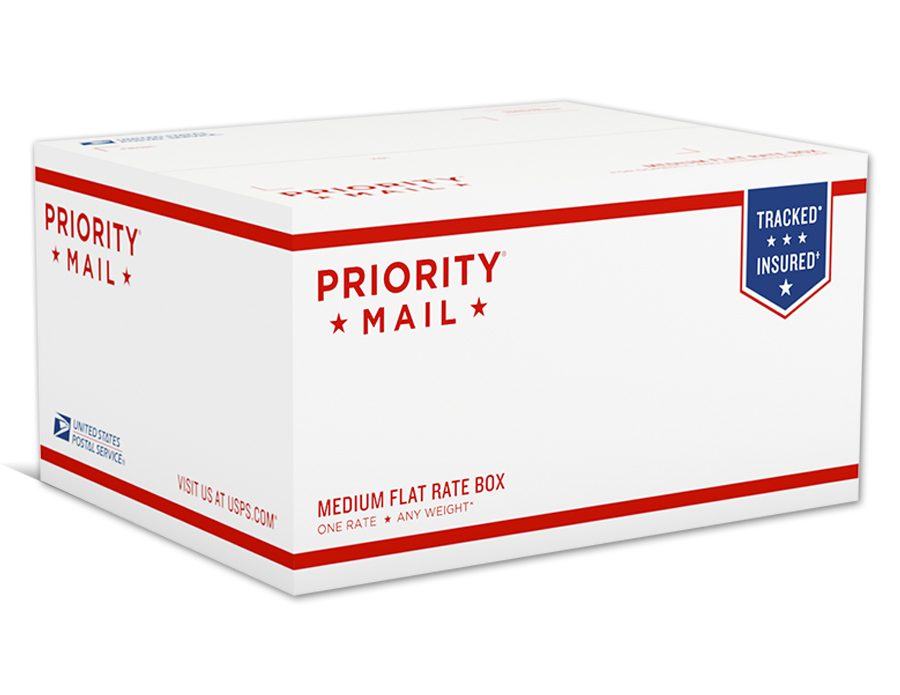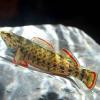I shipped out a box of fish this morning and I thought to myself, "The method I used to ship this is very different from what I used to advise people. Maybe I should share what I'm doing now and how my methods have changed." So I'm posting this here, to give you all an updated account of my shipping methods. Previous comments available here: http://forum.nanfa.o...7900#entry97900
1. Obtain a sturdy box. I used to mess around with styrofoam lined boxes, but they're hard to get a hold of, not consistent in size when you do get them, and frankly annoying to store (large, unfoldable). Now my method is to get USPS priority mail shipping boxes. I go to the post office and ask politely and they give me a box for free. Here's a picture:

https://store.usps.c...SS_PriorityMail
I use the square-ish shaped box, not the rectangle.
But Erica, you ask, what about the styrofoam serving as insulation? I don't use styrofoam, but I never said I didn't insulate the box. Storing styrofoam takes up way too much space because the boxes don't fold. Instead, I use cellulose (tree) based housing insulation. You can get a big square of it from Home Depot for $10 that'll last practically forever and is easy to store away in a closet or something. I have found that storing 20 boxes worth of cellulose insulation is less space than storing 20 styrofoam lined boxes, which used to make a teetering leaning tower all the way up to my ceiling.
2. Get some bags. I've stopped using breathable bags. They're fine, there's nothing wrong with them. It's just you can totally without meaning to overpack them with water. Not overpack, like, it's leaking. I mean overpack like, "It cost $15 to ship that package? Whaaa? Why? Oh, it's two pounds." It's just too easy to do. And also, those 2 mL thick shipping bags sold on aquabid.com in the shipping supplies section are like less than $4 for 50. You just can't beat that price, even using two bags like I do to eliminate the problem of edges (I always used to worry, with the breathable bags, that a fish would get stuck in a corner and get squished. If you double bag in the 2 mL bags there are no corners and that can't possibly happen). When the fish survive just as well, why pay more?
3. Obtain heat packs if it is winter. Yes, I use heat packs for native fish. No, you don't always have to. No, you shouldn't auto-use a heat pack; if they get too hot they will cook and die. But heat packs do mean that I can ship all year round. (Not the week before Christmas! 2-3 day suddenly becomes a week and a half!) Yes, I have killed shipments of Elassoma gilberti with an unnecessary heat pack. But if the temperature range is 20-50 F, sure, stick a heat pack in there, it'll help them out. A lot of our native fish (especially the ones I breed) are from places like Florida. They don't like 40 degrees F.
I buy the 72 hour heat packs off of aquabid.com or off of the company's website once you find a heat pack company you like. I like the 72 hour ones because USPS priority mail ships in 2-3 days. Pro tip: tape the heat pack to the top lid of the package so it can't wiggle down next to the bag. Put the fish bag near the bottom of the box so it can't wiggle up and sit next to the heat pack. If the fish bag touches the heat pack it's a sure way to cook the fish.
4. Do not feed the fish before you ship. One of the very first google results for 'how to ship fish' tells you to put food into the bag so that they'll have something to munch on while they're in transit. *headdesk* That is the very worst possible advice you could give someone. In your aquarium, the ammonia that your fish excretes is converted to nitrite and then nitrate by beneficial bacteria or eaten by plants as ammonium. There are neither beneficial bacteria nor growing plants in your shipping bag, so any ammonia produced will simply stay as ammonia. And with such a small water volume, the tiny amount of ammonia produced builds up in concentration very quickly. The fish will be fine if it doesn't eat for a week. There is no fish I can think of that wouldn't survive that. But if the ammonia hits 1, 2, 5 ppm in that bag, there aren't very many fish I can that of that would survive. So, don't feed your fish before you ship it. I usually separate the fish to be shipped and stop feeding them about a day or two before they go in the shipping bag. For example the guppies I shipped on Tuesday were separated from the rest of the fish and not fed on Monday.
Certain fish I don't starve. Small fish, like Elassoma and heterandria formosa (actually, the majority of fish I have at the moment), I don't bother to starve. They're day-time-eaters, so if you ship in the morning before work like I do and just don't feed them before you bag them that morning, they're fine.
But, yeah, don't add fish flakes to the bag. D'oh.
5. Tightly secure the top of the bag to be shipped. I used to say, "Tie it and put a rubber band on it" but now that I double bag using the 2 mL bags, I think the rubber band is overkill. *shrugs* Eh.
6. Clearly label the package. I do have something to say about this. Hand write your address, and don't write fragile on it. Clearly hand-writing your label is the best way to get it through shipping un-punted like a football. You know some people do that to packages marked fragile, you just know it. I read an article about people shipping force-meters through the mail to test whether the ones marked fragile were treated nicer. They were treated worse. Article: http://www.popularme...ckages?click=pp
"One disheartening result was that our package received more abuse when marked "Fragile" or "This Side Up." The carriers flipped the package more, and it registered above-average acceleration spikes during trips for which we requested careful treatment."
7. Use enough tape. I use that clear packing tape they sell at Walmart and places. It's my go-to tape for everything, actually. Scotch tape is too tiny.
8. Secure the fish inside the box so they can't roll around. Easy to do when you're packing it with cellulose fiber.
9. Buy a tracking number and insurance. That two dollars is totally worth it. One time this person I sent fish to claimed that they never got them. I was like, "What do you mean you never got them? I shipped them to you." I ended up giving the person a full refund because I couldn't prove I had shipped the fish to them. So buy a tracking number, because that way you can't possibly get scammed. Or, if the fish end up in Siberia instead of where you wanted them to go, you can call the Siberia post office and be like, "You have a box of live fish that was supposed to be shipped to X place. Can you please ship it there?"
I have used the insurance and had a very good experience. USPS took 8 days to deliver something I paid 2-3 day shipping on. Customer got it, took a picture of the corpse, I filed for insurance, I sent them another one. It went very smoothly. The insurance is totally, totally worth it. Also, you can write "The shipping is TRACKED and GUARANTEED" on your auction. People seem to like that more. Also it eliminates the whole Dead on Arrival hoopla that I used to have to do. Now they just take pictures, I file for reimbursement, and ship them more fish. Easy.
10. Obey the law. I was pretty annoying to my local wildlife people for a while there asking them lots of very, very specific questions about what it was legal to do. I also make sure when shipping plants that they're not a noxious species or banned in the state I'm shipping to. That was a problem when I had Myriophyllum aquaticum (some people would see it as being too closely related to its invasive cousin, M. spicatum), but is less of an issue now that I have Myriophyllum pinnatum (which is native to the US and therefore non-invasive). Also, you should register which plants you're shipping with USDA APHIS. I sent them my permit form a while back and contacted them and was generally annoying, like usual. If you can't do things legally, don't do them at all. But it turns out it's easy to sell fish and plants legally, at least for me here in North Carolina.










